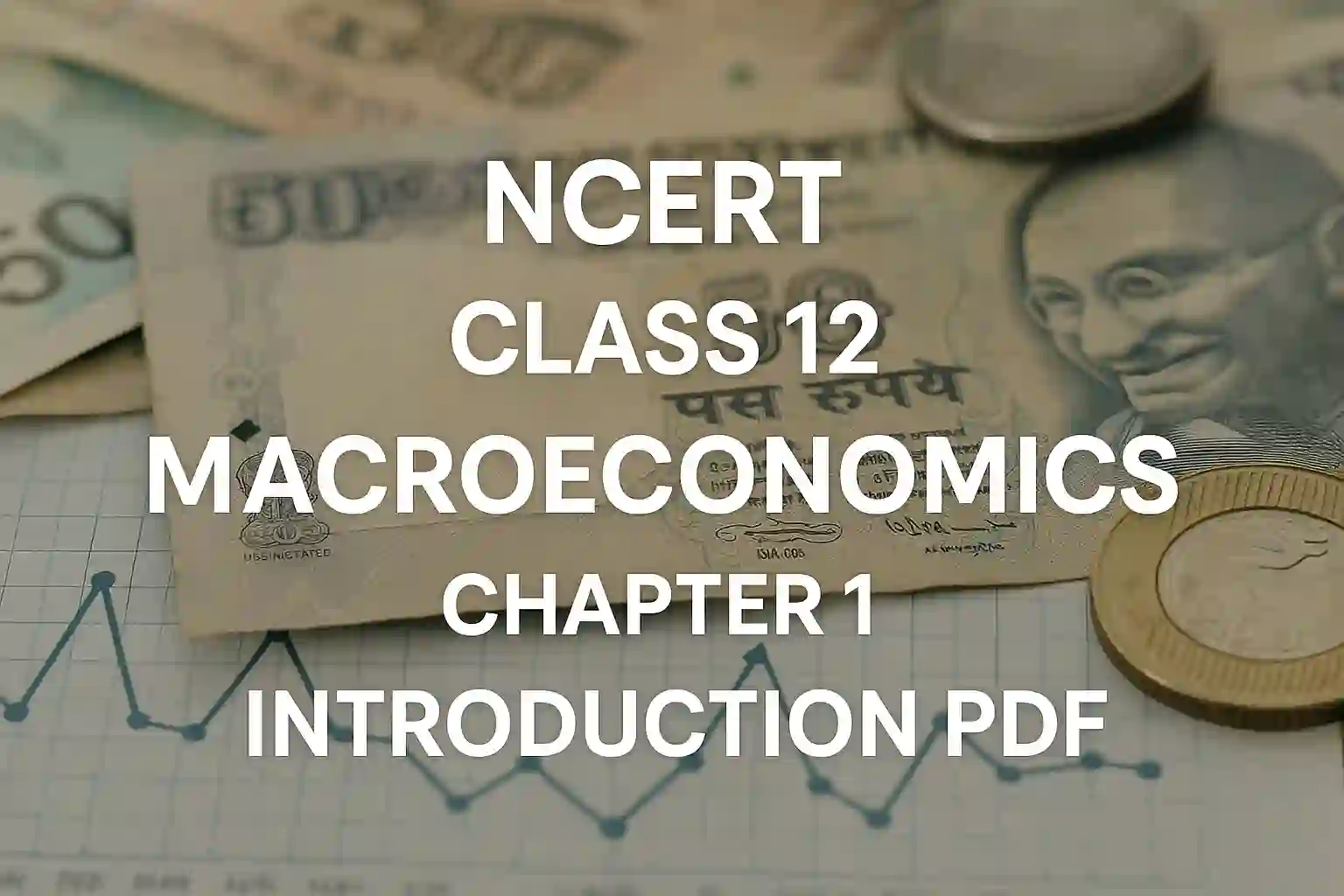The first chapter of NCERT Class 12 Macroeconomics is titled Introduction. It sets the foundation for the rest of the macroeconomics syllabus. This chapter mainly talks about what macroeconomics is, how it is different from microeconomics, and why we study it. It introduces basic terms like GDP, national income, and the overall working of the economy. The chapter also gives a historical background on how macroeconomic thinking developed over time, especially after the Great Depression.
I’m writing this article because I’ve noticed many students either skip this chapter or take it too lightly, thinking it’s just theory with no marks weightage. But this chapter is very important for building concepts and is often tested in MCQs, definitions, and even case-based questions in the CBSE board exams. Without understanding the basics given in this chapter, it becomes difficult to follow topics like national income, government budget, and foreign exchange later in the book. That’s why I feel it’s important to explain this in simple words and also provide a direct link to the official PDF.
What Does the Chapter Cover?
The Introduction chapter in macroeconomics acts like a roadmap for the rest of the book. It gives a clear idea about:
- The difference between microeconomics and macroeconomics
- What kind of questions macroeconomics tries to answer
- The need for government policies in managing the economy
- The significance of national-level data like GDP, inflation, and unemployment
Here’s a quick look at the main points.
1. Micro vs Macroeconomics
The chapter starts by explaining the basic difference:
| Microeconomics | Macroeconomics |
|---|---|
| Studies individual units like households and firms | Studies the economy as a whole |
| Deals with demand, supply, price of single goods | Deals with national income, employment, inflation |
This comparison helps students understand why macroeconomics needs a broader view.
2. Why Study Macroeconomics?
Macroeconomics helps us understand:
- Why there is unemployment even when there are factories
- What causes inflation and how to control it
- How the government decides taxes and spending
- What makes a country rich or poor
In simple terms, macroeconomics connects policies with real-world results.
3. Origin of Macroeconomic Thinking
The chapter also talks about how macroeconomics emerged as a separate field. It mentions the Great Depression of 1930s, which made economists think beyond individual behaviour. British economist John Maynard Keynes played a major role in this shift.
4. Policy Making and Macroeconomics
A very important takeaway from the chapter is that macroeconomic knowledge helps in designing public policies. For example:
- Fiscal policy (government spending and taxes)
- Monetary policy (control of money supply and interest rates)
These tools are used to control inflation, generate employment and promote economic growth.
Download NCERT Class 12 Macroeconomics Chapter 1 PDF
You can download the official NCERT Class 12 Macroeconomics Chapter 1: Introduction from here. This PDF is as per the latest CBSE curriculum and completely free to access.



















